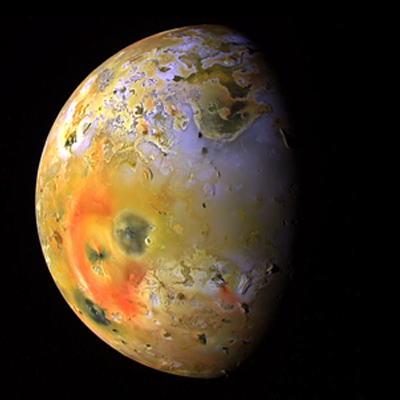
Planetary Plot of the Week
@PlanetaryPlots
Followers
324
Following
28
Media
46
Statuses
94
We post an interesting figure from a Planetary Science paper every week. Managed by grad students @henrymanelski, @smmenten98, @KrisLaferriere, @pcharon2000.
1 AU
Joined February 2024
This paper by Mason et al. (@Phliptish @ESEImperial) was published in @jgrplanets on February 22nd, 2024. (2/2). Link:
agupubs.onlinelibrary.wiley.com
A new regional chronostratigraphic framework is proposed for the evolution of Atla Regio Volcanism began along Dali Chasma, then plume volcanism began at Ozza Mons and finally Maat Mons became th...
0
1
3
This paper by Becker et al. (@NASAJPL ) was published in @jgrplanets on February 8th, 2024. (2/2). Link:
agupubs.onlinelibrary.wiley.com
Juno's Stellar Reference Unit took Juno's highest resolution image of Io's surface while the night side was illuminated by Jupiter-shine We report the first thermal emission from an active lava c...
0
0
3
This paper was published in @Nature by McCoy et al. on January 29th, 2025. (2/2). Link: Follow us on BlueSky:
www.nature.com
Nature - Samples from the asteroid (101955) Bennu, returned by the OSIRIS-REx mission, include sodium-bearing phosphates and sodium-rich carbonates, sulfates, chlorides and fluorides formed during...
0
0
0
This paper was published by @Joseph_McNeil et al. (@NHM_London) on Jan. 20th in @NatureGeosci. Link:
www.nature.com
Nature Geoscience - The Martian dichotomy boundary receded hundreds of kilometres in the Mawrth Vallis region and left behind mounds that record changing aqueous conditions during the Noachian...
1
1
3
This paper was published by Sánchez-Lavega et al. in @jgr-planets on Jan. 1st, 2025 (2/2). Link:
agupubs.onlinelibrary.wiley.com
We study the surface pressure and the thermal tides and waves, from the first Martian Year, obtained by the rover Perseverance at Jezero We correlate pressure variability and oscillations with du...
0
1
2
This paper was published by Alsaeed (@PlanetaryNoora) et al. in JGR Planets (@jgrplanets) on Dec. 1st, 2024. (2/2). Link:
agupubs.onlinelibrary.wiley.com
The shape, size, and stability of the Martian polar vortices are controlled by topography, dust loading, and insolation More snowfall occurs in the northern winter, with a notable reduction durin...
0
0
1
This paper was published by Lemmon et al. in Geophysical Research Letters (@theAGU) on Nov. 29, 2024. Link:
agupubs.onlinelibrary.wiley.com
Curiosity rover images reveal a previously unknown, visually spectacular cloud season in the Martian tropics during early southern autumn Iridescence in the noctilucent clouds requires a narrow p...
0
0
2
Our figure for this week is of multiple iridescent clouds captured by the Curiosity rover (@MarsCuriosity) on Mars. These clouds often form near sunset in early autumn, between 50 and 80 km in altitude, and are likely to be carbon dioxide.
1
14
29
This paper was published by Zhang et al. in @Nature on Nov. 9th, 2024. (2/2). Link:
www.nature.com
Nature - Volcanism identified by Pb–Pb dating of basalt fragments returned by the Chang’e-6 mission from the farside of the Moon gives a young eruption age of 2,807 ± 3...
0
0
1
This paper was published by White et al. (@SETIInstitute) in @IcarusJournal on Oct. 30th, 2024. Link:
0
0
1










